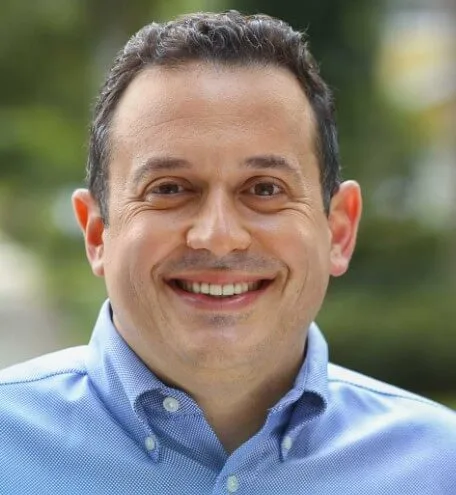
Image via Mivette Vega
An intensive-care specialist explains how the government’s decisions will determine if the number of positive cases increases, now that a partial reopening has been confirmed by the governor.
Positive cases of COVID-19 in Puerto Rico have been stable during the past few weeks, according to figures reported by the local Health Department. As of May 21, the total number of positive cases is 2,913, with 126 deaths reported, as the Executive Order has been signed by Governor Wanda Vázquez for a partial reopening next week.
But Dr. Eduardo Ibarra, an intensive care specialist with a private practice at the Centro Quirúrgico de la Montaña in Cayey, says the government’s decisions during the next phase of reopening will determine if the number of cases increases, and how. The current lockdown order is effective until May 25.
Governor Wanda Vázquez announced on Thursday the reopening of many economic sectors like restaurants, small and medium businesses, recreational areas, and retail stores. The new executive order will be effective starting on May 26 and will extend until June 15.
RELATED: ‘Nobody Has Accurate Data’: Health Sec. González Sorry Puerto Rico Doesn’t Have Accurate COVID-19 Count
“It is expected that as society reopens, the number of cases will increase. The situation requires very specific measures to see how much the numbers increase. If the increase is disproportionately high, mitigation measures must be taken again,” Dr. Ibarra told The Americano.
The doctor adds a measure that could be important during this phase is the reproduction number, also known as “R number,” which determines the virus’s ability to spread. This number specifically measures the number of people who can be infected by just one sick person.
“With the R number, we can determine if the reopening policies are effective without dangerously increasing the number of infections. In Puerto Rico, the R number has not been reported, and I don’t know if the state has calculated it. To calculate that index, you have to perform a lot of testing and measure various variables of social behavior as well as other things. Then you can know what the reproduction rate is,” explains Dr. Ibarra.
The doctor says if the R number is more than 1%, mitigation measures — such as reinstating a strict curfew — would have to be implemented because the spread will grow exponentially.
“It puts society at risk of a second wave of spread and can cause a high incidence of mortality,” Dr. Ibarra emphasizes.
The also former president of the Puerto Rico College of Physicians and Surgeons indicates going forward it will be necessary to make cautious changes and restrict again if needed, as Germany, South Korea, and other countries have done.
“In Germany and South Korea, if a person is infected, they quarantine them and all the people who had contact with that person. Puerto Rico has to take those measures. Watch what is happening and take action. That’s the game in pandemics: open up a bit, and go back until medicine or a vaccine is found,” Dr. Ibarra adds.
This week marks 14 days since a spike of the contagion was expected, as Lorenzo González, secretary of the Puerto Rico Health Department, had announced. Dr. Ibarra says that, apparently, the spread of the virus has been controlled. Although data is not available, additional information suggests this is the case.
“In Puerto Rico, the rate of mortality caused by the virus has stopped, so to speak. The death toll is small, stopping at about 120 and remaining there. That tells us without a doubt the disease has been contained. Since we don’t know what the R number is, we can only infer indirectly we are doing quite well because there are fewer admissions in hospitals, fewer people intubated, fewer people in intensive care, and fewer deaths. From these indirect observations we can say we’re on the right track,” Dr. Ibarra says.
The doctor warns, however, this assessment does not eliminate the possibility of another dramatic spike if the right measures are not taken.
“The bottom line is that the government should maintain a very scientific and precise observation of what is happening, including calculating the R number to really determine where we are going. As society opens up to normal activities, observe day-by-day how the disease manifests and take measures accordingly. It’s all a matter of buying time until a vaccine or medicine is available.”
RELATED: Here’s How Puerto Rico Gov. Vázquez Will Distribute CARES Act Funds
Politics

Teamsters and UPS Reach Tentative Deal to Avoid Strike, 340,000 Workers to Get Raises
The tentative deal represents a huge win for full- and part-time UPS Teamster workers, who would get significant pay raises and better working...



One Republican Senator Is Blocking 265 Military Promotions, Leaving the Marines Without a Confirmed Leader
Sen. Tommy Tuberville's decision means these military officers are not getting the pay raises they’re owed, cannot move their families to wherever...
Local News



Teamsters and UPS Reach Tentative Deal to Avoid Strike, 340,000 Workers to Get Raises
The tentative deal represents a huge win for full- and part-time UPS Teamster workers, who would get significant pay raises and better working...



One Republican Senator Is Blocking 265 Military Promotions, Leaving the Marines Without a Confirmed Leader
Sen. Tommy Tuberville's decision means these military officers are not getting the pay raises they’re owed, cannot move their families to wherever...




